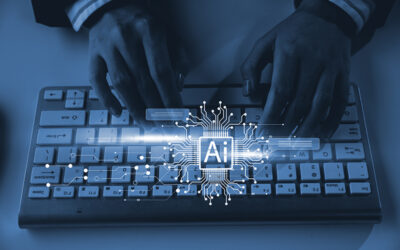At the beginning of every year, the digital industry discusses which technologies, trends and developments must be at the top of the digital agenda. The focus is on a wide variety of technologies to understand which trends have a lasting influence on digital transformation. For accurate digital transformation businesses rely on data conversion services. In a fast-evolving technological world, it may be a major risk for people and businesses if they don’t keep track of new trends. Understanding and practicing these key trends can provide more opportunities and insights.
Today, people and industries benefit a lot from advanced digital technologies. There are advanced automated services that can reshape the functioning of a business. Here are some major trends that you can expect in the near future.
Top 10 new trends for 2020:
- Hyperautomation: Automation refers to solutions that can automate manual tasks, whereas hyperautomation refers to automating tasks using advanced technologies like artificial intelligence and machine learning. This trend kicked off with robotic process automation (RPA). But RPA alone is not hyperautomation. Hyperautomation requires a combination of automation tools, multiple machine learning, and packages of software to deliver work.
- Multiexperience: Multiexperience replaces technology-literate people with people-literate technology. In this trend, the traditional idea of a computer evolves from a single point of interaction to include multisensory and multitouchpoint interfaces like wearable and advanced computer sensors. In the future, this trend will become what’s called an ambient experience, but currently multiexperience focuses on immersive experiences that use augmented reality (AR), virtual (VR), mixed reality, multichannel human-machine interfaces and sensing technologies.
- Human augmentation: Human augmentation is a topic that deals with how we are leveraging technology to augment humans both physically and cognitively. Cognitive augmentation refers to the ability to think and make decisions. Here physical augmentation refers to:
- Sensory augmentation such as perception, hearing etc.
- Biological functions augmentations like exoskeleton and prosthetics.
- Brain augmentations such as implants to treat seizures.
- Genetic augmentation such as somatic gene and cell therapy.
- Transparency and traceability: These are the key elements that deal with digital ethics and privacy needs. These two items are becoming increasingly important for organizations as society, people and employees are demanding to understand how their personal data is being secured and managed. As organizations build out trust practices, they have to focus on mainly three areas. They are,
- AI and ML
- Personal data privacy, ownership and control
- Ethically aligned design.
This trend will focus on ethics, integrity, openness, accountability, competence and consistency.
- Democratization: Industry leaders are always trying to democratize a technology trend for the broader set of people. Democratization of technology means providing people with easy access to technical or business expertise without extensive training. Democratization would enable developers to generate data models without having the skills of a data scientist. They would instead rely on AI-driven development to generate code and automate testing. It focuses on four key areas – application development, data and analytics, design and knowledge.
- The empowered edge: The empowered edge is really the shift of compute power to edge devices for more centralization. Edge computing is a computing topology in which information processing and content collection and delivery are placed closer to the sources, repositories and consumers of the data. This includes all the technologies on the Internet of Things (IoT).Empowered edge looks at how these devices are increasing and forming the foundations for smart spaces, and moves key applications and services closer to the people and devices that use them. However, edge computing will become a dominant factor across virtually all industries with increasingly more sophisticated and specialized computer resources and more data storage. Complex edge devices, including robots, drones, autonomous vehicles and operational systems will accelerate this shift.
- Distributed cloud: Distributed cloud is the application of cloud computing technologies to interconnect data and application from multiple geographical locations. Cloud providers use the distributed models to enable lower latency and provide better performance for cloud services. In distributed cloud, the cloud provider is responsible for all aspects of cloud service architecture, delivery, operations, governance and updates. The evolution from centralized public cloud to distributed public cloud ushers in a new era of cloud computing.
Distributed cloud allows data centers to be located anywhere. This solves both technical issues like latency and also regulatory challenges like data sovereignty. It also offers the benefits of a public cloud service alongside the benefits of a private, local cloud. - Autonomous things: Autonomous things simply means physical devices like automated vehicles, robots, drones, ships and appliances that use AI to automate functions that are usually conducted by humans. Autonomous programming models along with AI can deliver an environment more natural with their surroundings and people. As technology capability improves, more autonomous things will be deployed in uncontrolled public spaces.
- Block chain technology: Block chain technology is a new concept and many sectors are adopting this technology to handle data efficiently, prevent hacking of data, and data leaks. As a technology trend, it has the potential to reshape industries by enabling trust, providing transparency and enabling value exchange across business ecosystems, potentially lowering costs, reducing transaction settlement times, and improving cash flow. The complete block chain model includes five elements,
- A shared and distributed ledger
- Immutable and traceable ledger
- Encryption
- Tokenization
- A distributed public consensus mechanism.
- AI Security: AI and machine learning will continue to be applied to augment human decision making across a broad set of use cases Hyperautomation and autonomous things will not only introduce new opportunities, but new potential points of attacks in order to create security. AI security includes,
- Protecting AI-powered systems: Securing AI training data, training pipelines and ML models.
- Leveraging AI to enhance security defense: Using ML to understand pattern, uncover attacks and automate parts of the cyber security processes.
- Anticipating nefarious use of AI by attackers: Identifying attacks and defending against them.
During 2020, we will see wider adoption and a growing pool of providers that are likely to start offering more tailored applications and services for specific or specialized tasks. This will mean no company will have any excuses left not to use these emerging trends. Between accessing and storing information, the technology industry is in the midst of a huge growth spurt. Moving ahead by adopting technology trends will put you ahead of the competition and keep the organization’s data safe and secure. Proliferation of new trends can influence business process outsourcing companies also to adopt the new technology and enhance their customer service.




